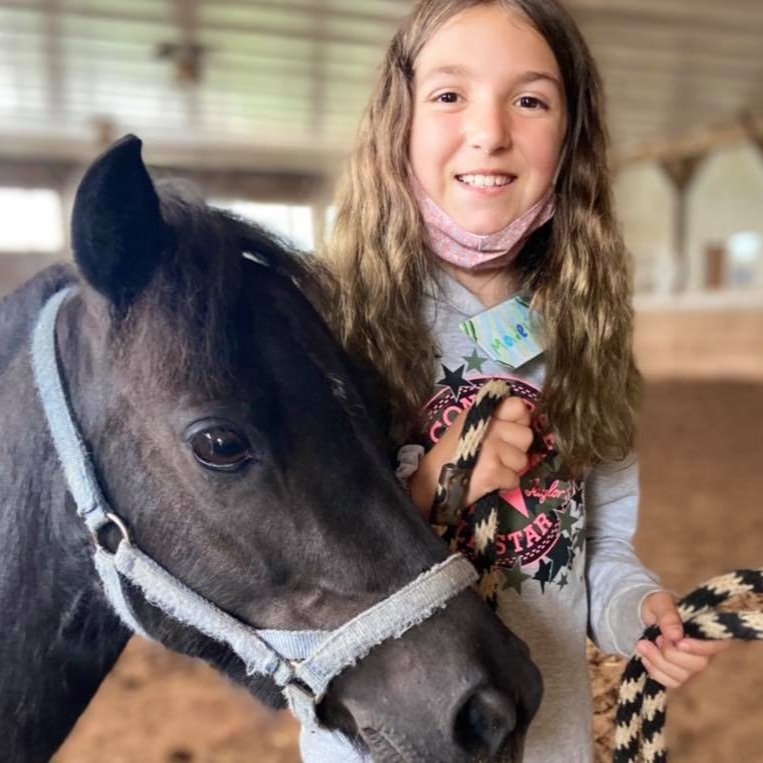Horses Make Great Teachers
School may be out for summer but learning is an all-year-round activity.
When you think of a teacher, you may picture a person standing at the front of a classroom providing instruction. If there is one thing that I have learned in my years of working with horses, it’s that they are natural teachers Bonus? Their classroom is outside.
Here, let me explain.
Horses Teach Us Awareness
Even mini horses are still the size of a large dog. Though they are gentle by nature, they have the capability to cause harm if we are not aware of our surroundings or put them in situations that may cause them to spook.
One of the first things that we learn about spending time with horses is how to approach them respectfully by walking towards them calmly and speaking in a soft voice. While these are very basic things we do to keep ourselves and the horses safe, it really is a practice in self and exterior awareness.
Self-awareness: Am I nervous? Does the horse see me coming? Could I appear threatening?
Exterior awareness: Does the horse appear nervous? Are they giving me cues they may be uncomfortable? Is this a good environment to meet a horse?
You start to instinctively read natural cues that may tell you if the situation is safe or not.
Horses Teach Us to be Present in the Moment
In our busy world full of distractions, we rarely take the time to simply be in the present moment.
Horses feel safer when we are fully present with them. It’s in this authentic and mindful space that we can take the opportunity to bond with another living being and be receptive to their teachings.
Beautiful things happen when we make the choice to be present. We are better able to connect with our own systems and feelings in a way that can build trust with ourselves and our gut instincts. Some people (myself included) describe my interaction with horses meditative as it forces me to be self-aware and present.
Horses Teach Us Non-Verbal Communication
Relaxed ears indicate that the horse is feeling calm while ears forward tell us that the horse is on alert. Pinned back ears generally mean that they are not in a mood and erratically moving ears suggest that the horse may be anxious and unsure of the stimuli in their environment.
We can learn all of this by just being aware of the position of their ears! That doesn’t even touch the rest of the body language that horses use to communicate with us.
While it is debatable how much of our human communication is non-verbal, we do know that it is the majority. I have yet to meet a horse that spoke English (or any other language for that matter) so we must be perceptive and we also need to reciprocate non-verbally.
As much as you are watching a horse for cues, they are also watching you - and they are excellent body language readers.
Think of how you would approach someone new. Would you…
Run at them in excitement?
Puff out your chest and stomp over?
Calmly approach them with a soft and friendly voice?
Hopefully, you would approach another human (especially one that you have never met before) calmly. Horses also appreciate and trust this kind of approach.
Horses Teach Us Leadership
You would think that an animal as large and majestic as a horse would be naturally confident and in charge. The truth is that horses are prey animals and need to work at overcoming their instincts and allowing themselves to be vulnerable in the presence of predator animals like humans.
Trust is the key to letting this happen.
We (humans) have to work to create an environment where the animal feels safe and trusts us as their partner. It takes a lot of bravery for the horse to do this but it also takes a special kind of leader to foster an environment where this can happen.
Time for Class
I am also learning the skills mentioned above and putting them into practice both on and off the farm and in all our programs. In recognizing the value of these lessons, I have developed a Life Skills Development Program that facilitates life skills through positively reinforced interaction with the horses on our farm. You can learn more and inquire about the program here.




